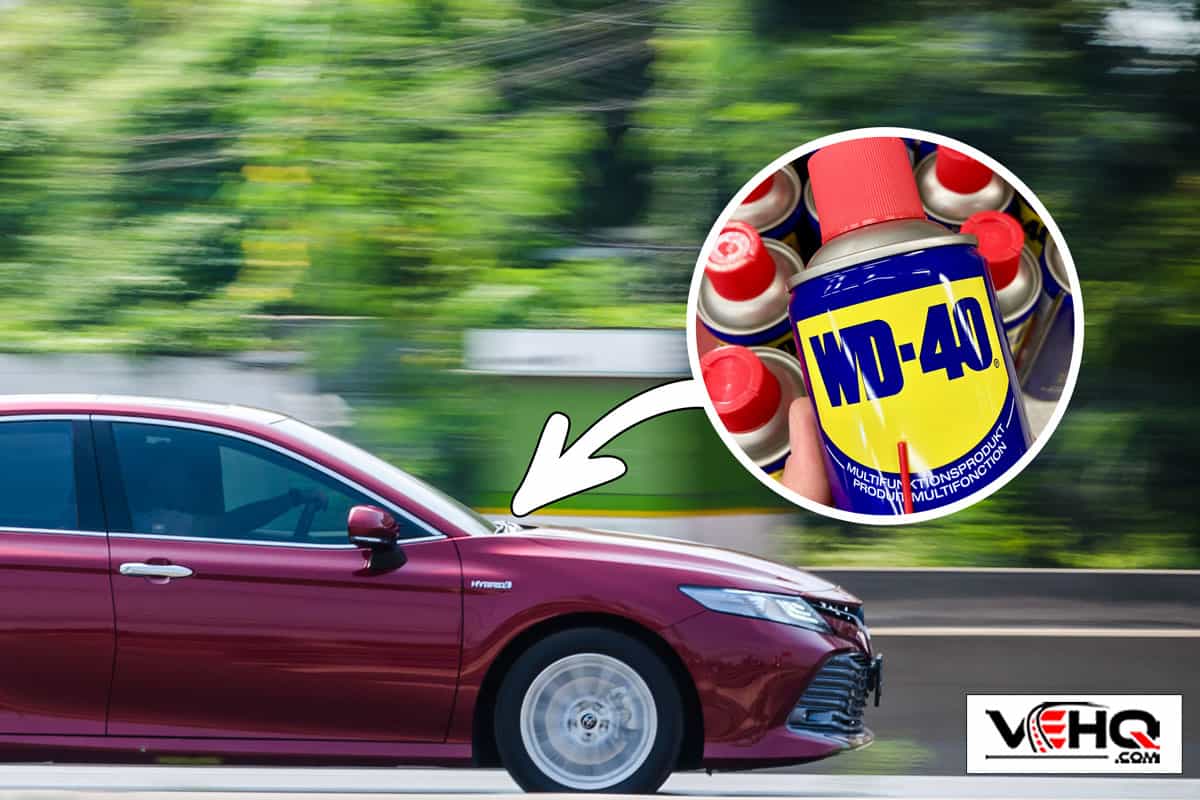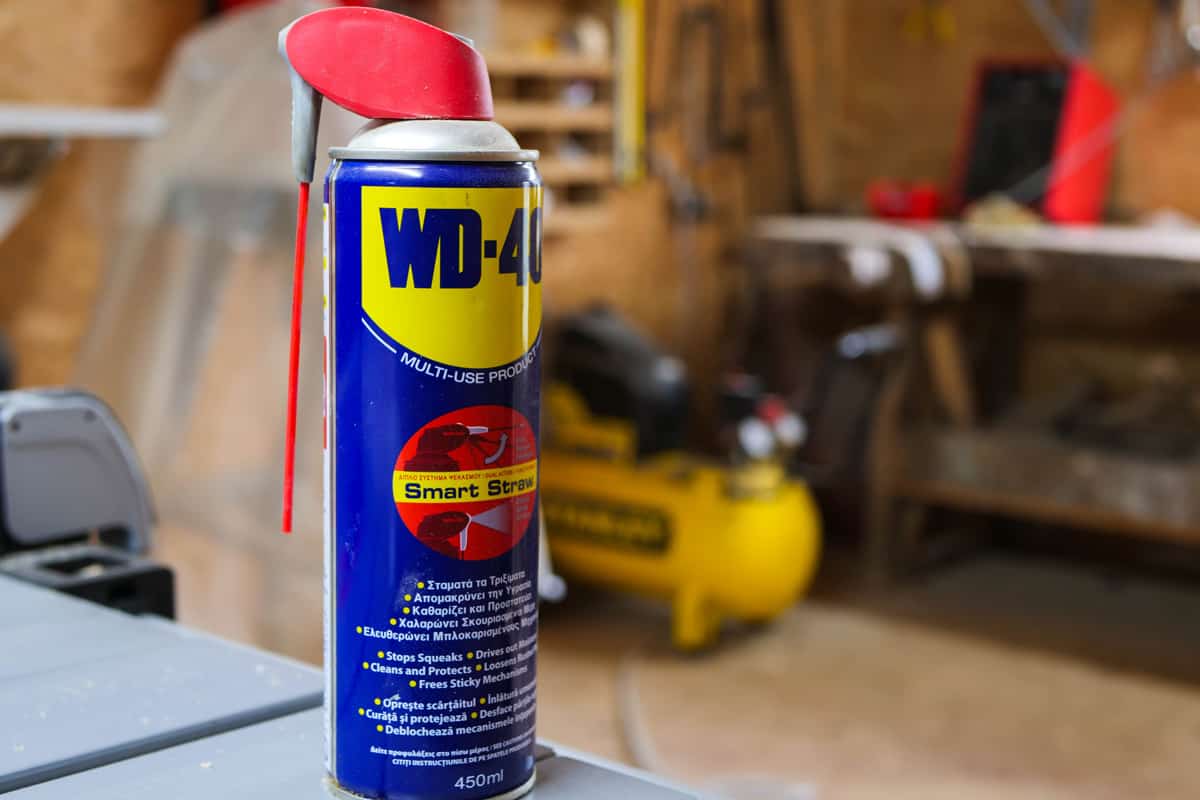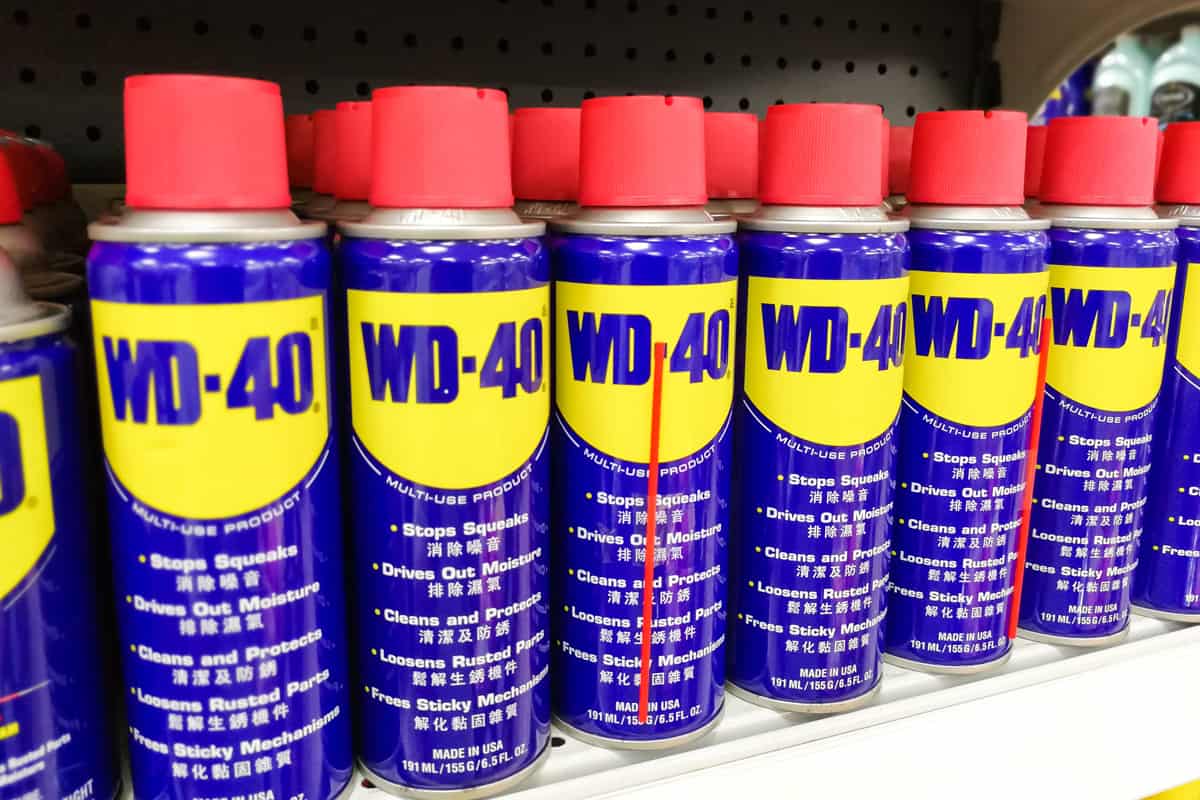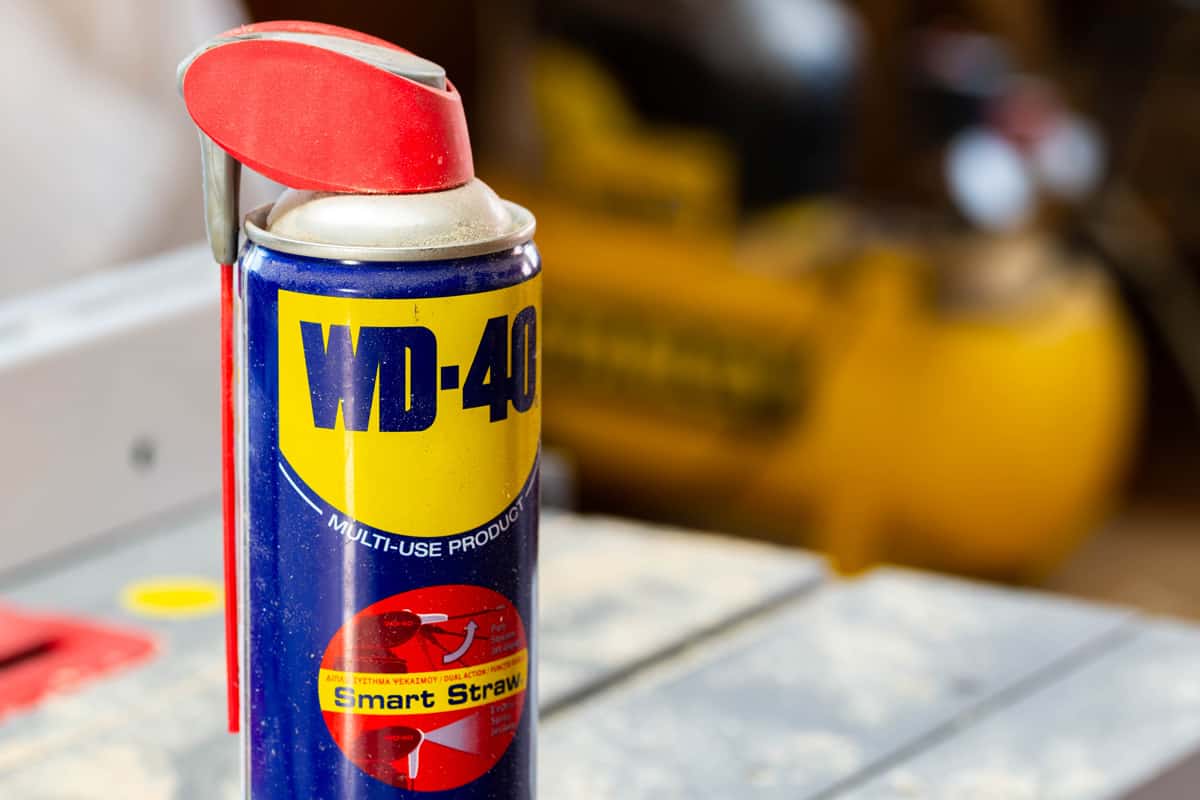WD-40 is a versatile solution that can be used for a wide range of tasks. But can it help you remove spray paint from your vehicle? Let's take a look.
When it comes to removing spray paint from your car, WD-40 can be a helpful solution. The lubricating properties of WD-40 can help to break down the paint, making it easier to remove. As an added bonus, WD-40 won't damage your factory paint job or clear coat.
It's nice to know there is a solution like WD-40 that can be used to safely remove spray paint from your car. In this article, we will discuss how to use WD-40 to remove spray paint from your vehicle. In addition, we will answer other frequently asked questions about using WD-40, so read on!

Using WD-40 to Remove Spray Paint from Your Vehicle
WD-40 is a versatile solution that can be used for a wide range of tasks. It is a water-displacing spray that is used to protect the metal from rust, lubricate moving parts, and dissolve adhesives. WD-40 can also be used to remove spray paint from your car.
There are different circumstances as to why spray paint would be on your car. For example, it could be from a graffiti artist, or you may have accidentally sprayed paint on your car while doing a project around the house.
Whatever the case may be, WD-40 can help to remove the spray paint quickly and easily.
Here's how to use WD-40 to remove spray paint from your vehicle:
- Clean the area around the spray paint with soap and water.
- Wipe the area with a clean cloth to remove any dirt or debris.
- Spray WD-40 directly on the spray paint. Allow the WD-40 to sit for a few minutes.
- Now, spray WD-40 onto a magic eraser or clean rag. Gently rub the magic eraser or rag over the spray paint until it starts to lift.
- It may require some elbow grease, but eventually, the spray paint will start to come off.
- Once the majority of the paint has been removed, wash the area with soap and water.
- Dry the area with a clean towel.
- Apply WD-40 to a clean cloth and wipe down the area to remove any residue.
Click here to see this two-pack of WD-40 on Amazon
As you can see, using WD-40 to remove spray paint from your car is a fairly simple process. But what about other frequently asked questions about using WD-40? Let's take a look.
What Else Can You Use WD-40 for?
In addition to removing spray paint from your car, WD-40 can be used for a variety of tasks.
Removing Bugs from Car
Do you have bugs that won't come off your bumper or windshield? WD-40 can help with that. Just spray the WD-40 on the bugs; they should come right off.
Lubricating Mechanical Parts
If you have a squeaky door hinge or a sticking drawer, WD-40 can help to lubricate the moving parts. Just spray a small amount of WD-40 on the hinges, and they should be good as new.
Cleaning Bike Chains
If your bike chain is dirty and full of gunk, WD-40 can help clean it. Just spray the chain and wipe it down with a rag.
Rust Removal
If you have an old saw blade or tool that is starting to rust, WD-40 can help to remove the rust. Just spray the rusty object, and it should start to come off. In addition, WD-40 will also protect your truck or car from rust.
Removing Gum and Glue
If you have gum or glue that is stuck on surfaces like your desk or table, WD-40 can help to remove it. Just spray the WD-40 on the sticky residue, and it should start to come right off.
As you can see, there are a variety of tasks that WD-40 can be used for. So, if you ever find yourself in need of a versatile solution, reach for WD-40.
![]()
What Should You Not Use WD-40 On?
While automotive WD-40 can save the day in several situations, there are some things that you should not use WD-40 on. Certain plastics such as polycarbonate and clear polystyrene plastic are not compatible with WD-40.
Another is electronics. If WD-40 gets into the wrong parts of an electronic device, it can damage the circuitry.
So be careful with the plastic moldings or electronics in your vehicle when using WD-40. The last thing you want to do is cause more damage while trying to fix something.
In general, WD-40 is a great solution for a variety of tasks. But be sure to use it wisely and only on the appropriate surfaces.
How Long Will WD-40 Protect My Car From Rust?
Typically, you can expect WD-40 to protect your car from rust for 1-year indoors and 2-years outdoors.
Of course, this will depend on the severity of the weather conditions and how often you use your vehicle.
For example, places that have road salts during the winter will cause your car to rust more quickly.
But if you live in an area with little to no snow and you don't drive your car often, then WD-40 should protect your vehicle from rusting for 2-years.
So, depending on your climate, you may need to apply WD-40 more frequently to prevent rusting.

Is WD-40 Flammable?
When used as an aerosol, WD-40 is flammable.
So be sure to use caution when using WD-40 near an open flame or heat source.
This means that it needs a heat source to start burning, but once it's lit, it will continue to burn on its own.
Technically WD-40 is not flammable, it is combustible. Technicalities aside, this can be just as dangerous.
Be sure to use caution when using WD-40 and always read the label before use.
How Do I Store WD-40?
If you're not using WD-40 right away, it's important to store it properly to prevent evaporation.
For best results, store WD-40 in a cool and dry place. Since it is combustible, you should also avoid storing WD-40 near any heat source or open flame.
In addition, be sure to keep WD-40 out of reach of children and pets.
When stored properly, WD-40 can last for many years. But be sure to check the can before use to make sure that it hasn't expired.

How Often Should I Use WD-40?
This will depend on the task that you're using WD-40 for.
For example, if you're using WD-40 to protect your car from rust, you should apply it at least once a year.
But if you're using WD-40 to clean your bike chain, you'll need to apply it more frequently.
In general, it's a good idea to follow the manufacturer's instructions when using WD-40. This will help to ensure that you're using it properly and getting the most out of the product.
What If WD-40 Doesn't Work for Spray Paint on Car?
If WD-40 doesn't work for removing spray paint from your car, you may need to use a stronger solvent.
There are a variety of solvents that can be used to remove spray paint, but they can also damage the paint on your car.
So be sure to test the solvent on a small area of your car before using it on the entire surface.
If you're not sure which solvent to use, you can always contact a professional for help.
A professional detailer or body shop will have the experience and knowledge to safely remove spray paint from your car.
They'll also be able to offer advice on how to prevent spray paint from happening in the first place.

Should You Spray Paint Your Car?
This is a difficult question to answer because it depends on a variety of factors. First off, it depends on the result you're hoping to achieve.
If you're looking for a temporary fix, then spray painting your car may be a good option. But if you're looking for a more permanent solution, then you'll need to take your car to a professional body shop.
Another factor to consider is the cost. Professional paint jobs can be very expensive, so if you're on a budget, spray painting your car may be a more affordable option.
Finally, it's important to consider the risks involved. If you don't have experience with paint jobs, then it's best to leave it to the professionals.
Attempting to spray paint your car yourself could result in a poor job that will need to be fixed by a professional anyway.
So, if you're not sure whether or not you should spray paint your car, it's best to consult with a professional first.
Final Thoughts
As you can see, WD-40 can get you out of a bind. However, it's important to use caution when using WD-40 and always follow the manufacturer's instructions.
In addition, be sure to store WD-40 properly to prevent evaporation and keep it out of reach of children and pets.
Made it to the end? Here are other articles you might like:
Car Bumper Paint Peeling – What To Do?

